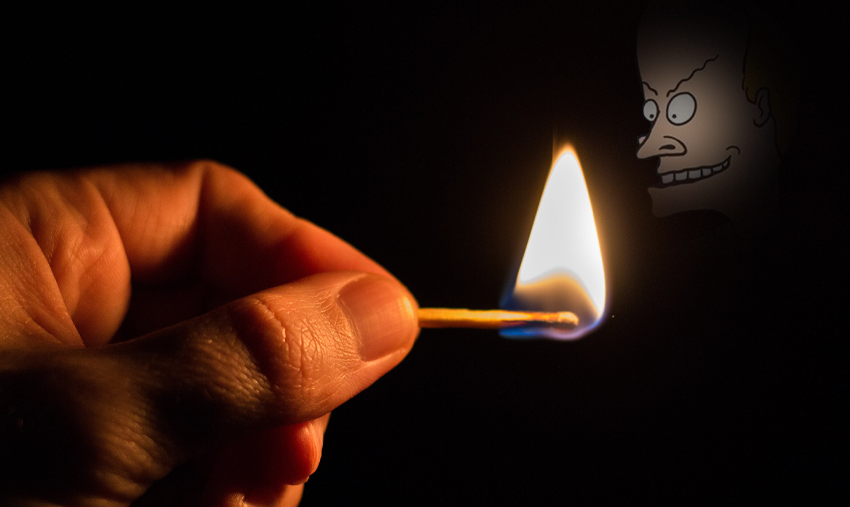Hot off the press!
Burn and learn with a roundup of last week’s fire news

Maybe you think nothing has changed about fire since somebody figured out how to bang flint on pyrite 9,000 years ago. And maybe you’re right: as a wise man once said, “it was always burning since the world’s been turning.” But we’re still learning more about fire, and that’s where this week’s news briefs come in. Let’s get to stoking!
Moth myth busted (in saddest way possible)
When we think of the expression “moths to a flame,” we imagine wide-eyed insects that can’t resist the siren call of the light. Heck, we’ve even written pop standards about it. But a new study shows that’s not what happens at all.
Researchers from the Imperial College of London found that when moths come across a light source in the dark, they instinctively turn their backs to it. That’s because what they’re really doing is orienting themselves relative to gravity, and for most of their evolutionary existence, the starlit sky was the easiest way to do that. “It’s extremely smart because it’s very finely tuned,” lead researcher Sam Fabian told NPR. “It works beautifully until somebody invents the lamp or the light bulb. And then it’s suddenly not such a good idea anymore.”
Slow-motion video showed that when they come across a point source of light—a burning fire, a strong light bulb—the back-turning doesn’t work, the reorientation short-circuits, and moths launch into an erratic and futile course-correction mode that just happens to look like a hypnotic obsession with the flame. “You get the sense that they don’t want to be doing it,” Fabian said, “like they are trying to figure out how to navigate this weird situation, but they just don’t have the tools.” Kinda feel bad for making fun of them now, huh?
The heat is off
There are few things more comforting in winter than sitting in front of a blazing, crackling fire. But according to a recent Science Norway article, despite warming your toes and/or your soul, but the fireplace is not doing much “heating” at all.
“One of the main problems with open fireplaces is their tendency to pull in too much air without any effective way to control it,” SINTEF chief scientist Øyvind Skreiberg told the publication. “This leads to an excess of air, inefficient burning, and a significant loss of heat.” Basically, while the fire is burning, warm indoor air is replaced by cold air from outside. This effect only intensifies when the fire dies down and the damper stays open to keep unburned gasses from seeping into the room. Net amount of warm air in your room? Negligible at best, negative at worst.
Take it from someone in the coldest part of Europe: If you want the allure of a pretty fire with much increased efficiency, install an enclosed fireplace insert. “It operates on the same principle as the free-standing stove,” Skreiberg said, and can even connect to your existing chimney.
Girls on fire
On Jan. 30, thousands of Shetlanders celebrated a unique mass celebration that involves lots and lots of flaming torches. This year’s Up Helly Aa dire festival stands out from the festivals of years past: for the first time, women and girls are leading the way.
First celebrated in 1881, the Up Helly Aa fire festival is an expression of the Viking culture of the people who live on the islands. In the town of Lerwick this year, more than 1,000 people carried lit torches through the streets in a spectacular glowing display. Among the 47 squads of “guizers” (people in disguise), only one has the honor of being that year’s procession-leading “Jarl” squad, dressed in full Viking regalia and led by a specially selected “Guizer Jarl” (his teenage daughter was part of this year’s first mixed-gender cohort).
The impressive fire procession takes them to a wooden galley ship built by the townsfolk in the months leading up to the event, which they then light on fire. When that mission is accomplished, they head to local halls where they burn up the dance floor to the music of local bands.
What’s that you ask? Is there video? Helly aa there is:
